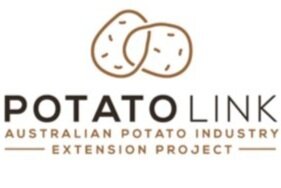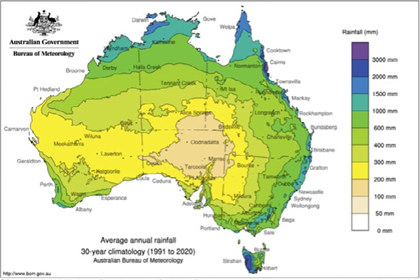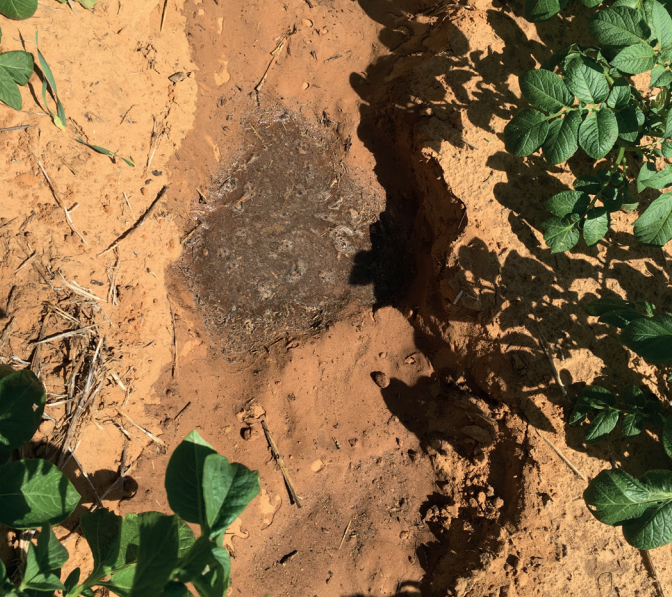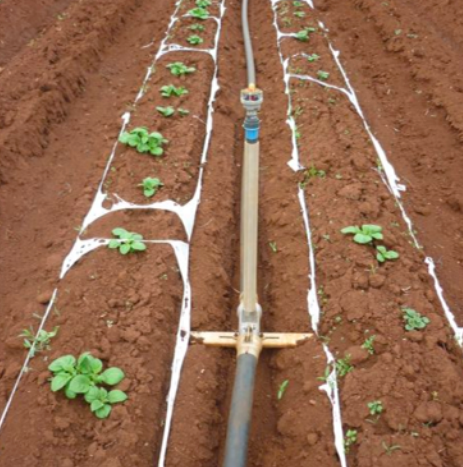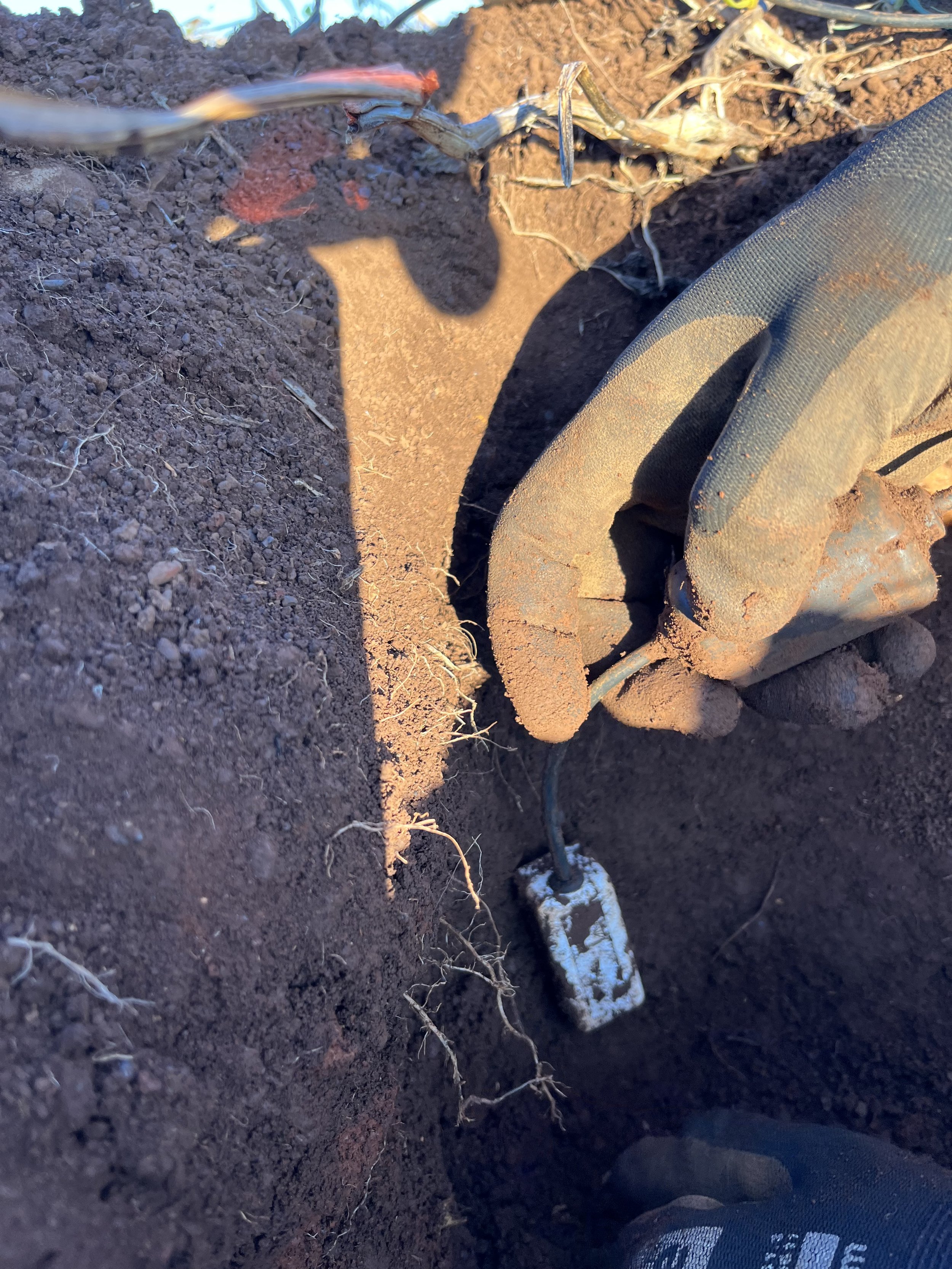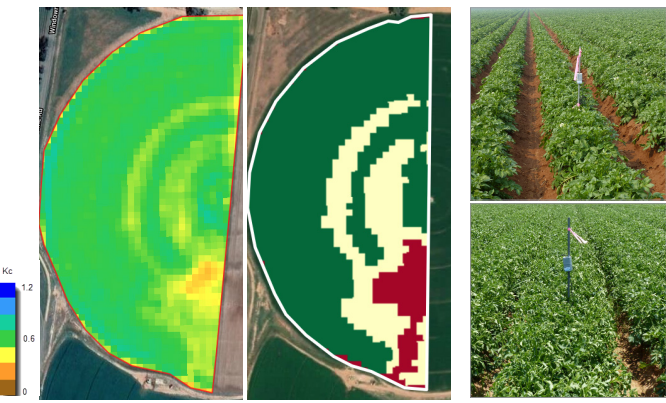
Irrigation Technology
Growing crops in Australia is not for the faint-hearted, especially when it comes to managing water. The challenge lies in the fact that we often have either too little or too much water, and not always at the right time. Farmers cannot rely on gentle, frequent rain to replenish soil water levels; managing water for crops needs deliberate and considered intervention. Read the full article in Issue 13 of PotatoLink Magazine.
Following a PotatoLink online training webinar with senior members of the Bureau of Meteorology, Paulette Baumgartl has compiled a comprehensive article in Issue 09 of PotatoLink magazine pointing out that behind the weekly temperature and rainfall forecasts, and the much-loved radar, sits an abundance of data, both raw and interpreted. If you know where to look, this data can be a useful decision-making tool.
Join the PotatoLink team as we explore mobile drip irrigation in potatoes, where we will delve into the exciting world of this technology. The webinar is targeted to growers interested in learning more about ways to enhance watering efficiency to minimise costs, boost yields, and grow more sustainably.
Adrian James covers the current state of play of carbon in agriculture, carbon neutral farming and the use of farm carbon calculators. In addition he explores the opportunities in farm carbon offsets.
With a growing interest in the area of soil health and the wide range of products available, this fact sheet explores organic soil amendments, biologicals and biostimulants to help growers understand what these products are and how they work.
Explore the impact of hydrophobic soils on potato production and options for growers to assist with their management to improve potato yields.
‘Know your salts’ takes an in-depth look at salinity and the salts that affect both plant health and soil structure, and guide potato nutrition.
This first fact sheet outlines the causes of salinity followed by key assessments and tests that will better inform your management decisions.
This Serve-Ag project ran from 2016 to 2020 to assess groundwater quality in areas of potato production in South Australia (where groundwater quality is most variable) and investigated how regional and seasonal water-quality variability impacts on potato production and quality.
A three-year project in Tasmania was conducted on the potential benefits of using degradable polyethylene films in potato crops. This 2013 report found there was limited benefit to nitrogen fertiliser savings and yield but instead may allow for early harvest and some water saving.
Moisture Sensing
Beyond providing soil moisture data at a given time and soil depth, can soil moisture probes help in making future irrigation decisions? The potential of moisture probes to serve a dual role was the subject of a PotatoLink demonstration trial are discussed in this PotatoLink magazine article.
Following a PotatoLink online training webinar with senior members of the Bureau of Meteorology, Paulette Baumgartl has compiled a comprehensive article in Issue 09 of PotatoLink magazine pointing out that behind the weekly temperature and rainfall forecasts, and the much-loved radar, sits an abundance of data, both raw and interpreted. If you know where to look, this data can be a useful decision-making tool.
PotatoLink held a research and development forum in Adelaide on 5 June 2023. The seven speakers covered a range of topics including diseases, irrigation, monitoring technology and more. Below are recordings of the presentations given on the day.
Three successive La Niña seasons have left prime potato growing areas waterlogged. Challenges for growers are evident at every stage, from managing seed, planting, crop management and storage. Paulette Baumbartl covers all the key points in this article in Issue 8 of PotatoLink magazine.
Ensuring plants get the right amount of water when they need it is essential to produce a great crop. In this factsheet, Dr Jenny Ekman covers water stress, waterlogging and how to make sure your potatoes are getting the right amount of water.
PotatoLink team member Frank Mulcahy discusses historical mapping and crop conformance, redictive crop modelling, pioneering Variable Rate Irrigation (VRI) on farm and results from finished 2 year project on spatial variability in potato crops.
Watch this webinar presented by Frank Mulcahy to learn how soil mapping (EM38) can assist potato growers with better yields.
Learn about using the IrriSAT technology which combines evapotranspiration (ETo) and satellite imaging, and how to link this with data from direct soil moisture sensors, to help you schedule irrigation.
This NSW case study has shown that IrriSAT satellite images, used to monitor irrigation, can also help potato growers identify soil and irrigation problems across the pivot. Fixing the problems identified in this case study would have increased yield and revenue by between $7,600 and $10,800 under this half pivot.
This case study explains how the irrigation tool, IrriSAT, combined with soil moisture monitoring, provided important information to the grower about crop water requirements and actual soil moisture levels. This enabled him to manage his crop irrigation to maximise yield and quality.
Irrigation Management
Growing crops in Australia is not for the faint-hearted, especially when it comes to managing water. The challenge lies in the fact that we often have either too little or too much water, and not always at the right time. Farmers cannot rely on gentle, frequent rain to replenish soil water levels; managing water for crops needs deliberate and considered intervention. Read the full article in Issue 13 of PotatoLink Magazine.
Following a PotatoLink online training webinar with senior members of the Bureau of Meteorology, Paulette Baumgartl has compiled a comprehensive article in Issue 09 of PotatoLink magazine pointing out that behind the weekly temperature and rainfall forecasts, and the much-loved radar, sits an abundance of data, both raw and interpreted. If you know where to look, this data can be a useful decision-making tool.
Managing your growing crop with the weather in mind can be a challenge, so having a suite of forecasting and historical data available, can help with decision making. Join BOM’s team as they share what tools are available, where they can be found, how they work and how they are best used.
In Issue 06 of PotatoLink magazine, Ryan Hall looks at the accessibility and mobility of technology available to growers in the form of drones, remote sensing and smartphone apps.
As it warms up and your potato crop gets going Dr Kelvin Montagu and Marc Hinderager talk practical tools to help scheduling and monitor irrigation in potatoes.
IrriSAT, is a free satellite-based irrigation scheduling app. It combines satellite images with weather data to estimate crop water use. Learn how it works and what you can use it for.
This PotatoLink magazine article discusses making the most of the quieter months preparing for next season’s crop — checking long-term weather forecast, soil testing, checking irrigation equipment, considering drainage, and managing pests and disease.
